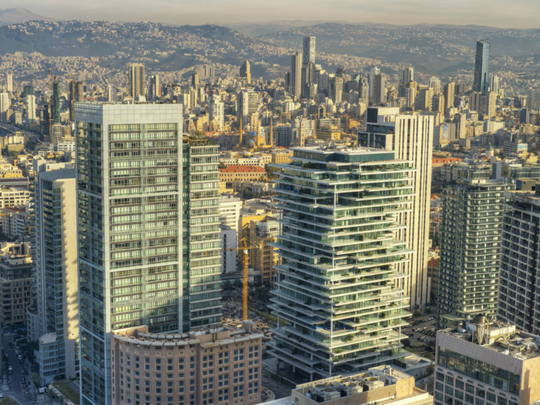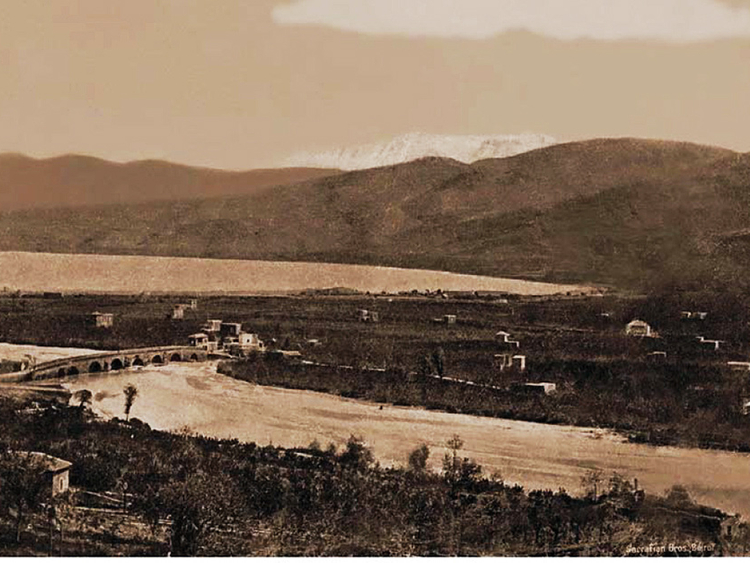
Beirut: Land reclamation was always a common feature in Lebanon but more so after the 1975-1990 Civil War, when militias built their own illegal “harbours” to smuggle in weapons and other goods. After 1990, reconstruction necessitated extraordinary measures, with the ubiquitous Council for Development and Reconstruction (CDR) authorising the Normandy Landfill, which lay on the ruins of what was once a hotel of the same name. A second landfill, the huge Bourj Hammoud dump, collected the ruins of what was “Downtown Beirut” before Solidere rebuilt it.
The Bourj Hammoud dump, which stands as an environmental blight north of the city, was reactivated in 2015 to replace the Naama garbage landfill in the Chouf Mountains. Like the Normandy, which was transformed into the BIEL waterfront district, Bourj Hammoud will apparently be rehabilitated, although details are murky.
In 2016, the CDR approved several projects on the site, including the construction of a new sewage treatment plant, the sale of public property, along with right-of-way passage to complete the long-dormant LINOR Highway project, which also plans to develop green spaces and gardens between Beirut Port and Marina Dbayyeh.
LINOR stands as a good illustration of how Lebanese elites mastered the art of concealing waste disposal behind real estate development, with the even more dangerous consequences of disguising toxic waste — some of it imported from overseas — as raw materials that, regrettably, all of these dumps include.
Over the years, CDR officials declared that all landfills were properly built, allegedly “designed and implemented in accordance with the international standards set forth in various contracts.” Whether the Bourj Hammoud garbage mountain meets such standards is impossible to know though criticisms linger.
In the event, critics believe that the section between the harbour (near Qarantina) and Bourj Hammoud, which is being redrawn to provide filler for new land reclamation, may contain toxic refuse.
Environmental watchdogs like Greenpeace have effective local chapters whose officers monitor ongoing work, even if few know how effective their access to various sites may be.
Simply stated, the super-secretive CDR, which is an ideal vehicle for politicians to channel wealth, overlooks the dangers associated with such projects. In a recent interview, Fouad Hamdane, Greenpeace’s representative in Lebanon declared: “There is money at stake behind every environmental scandal, but I would put myself at risk if I said they all involved corruption.” The 38-year-old former journalist appeared in court on several occasions in connection with his work, and only avoided prison because of Greenpeace’s international reputation.
Jad Chaaban, an associate professor of economics at the American University of Beirut with expertise in agricultural, environmental and natural resources economics, recently told the local English-language newspaper The Daily Star, that land reclamation is a “win-win situation, especially if you’re a politician.” He added: “[There is] a lot of waste, you can’t burn it because it smells very bad, you need to dump it somewhere and there is very little land available. ... Each local militia leader [during the war] first had to sort out the waste problem, and then they found a magic solution: ‘Let’s also [gain] land from the sea.’ So it’s a win-win for them,” a pattern that survived the last part of the twentieth century and is ongoing.
Lebanon’s coastline is changing dramatically, with new planned landfill sites that will extend hundreds of metres into the Mediterranean that, amazingly, seem to bother few politicians. Many are persuaded that waste is inert though that is hardly the case with significant environmental damage that will leave an impact on future generations.













